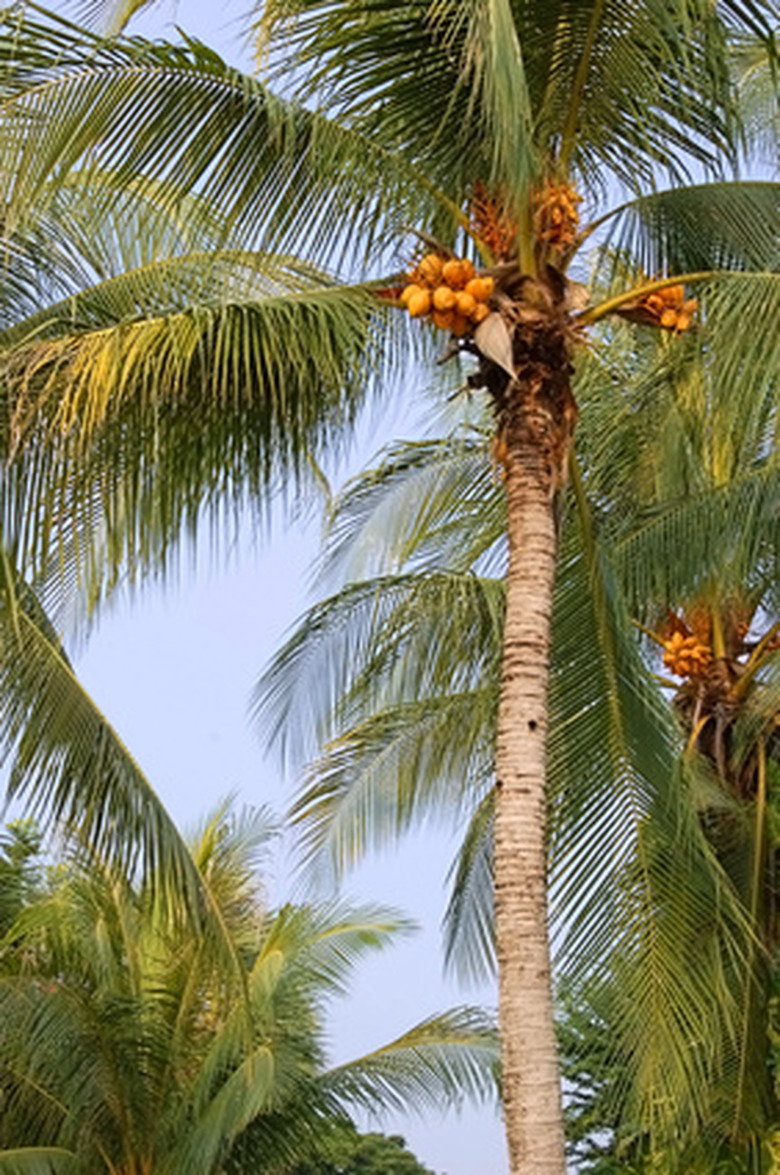What Problems Can Coconut Trees Bring
Coconut palms are large trees that thrive in low elevations from the subtropics to the tropics. The large fruit (coconut) is widely used and forms the basis of many tropical countries' economies. Coconut oil is an important product of this tree, used in soap, cosmetics and cooking oils. But watch out–those large coconuts might kill you if they drop off the tree and fall on your head.
Falling Coconuts
When planted near roads and sidewalks, many cities and concerned homeowners are diligent in pruning off small, developing coconuts from these trees before they grow large and become a hazard to people, animals and cars. In 1989, a study by Peter Barss published in the "Journal of Trauma" noted the force of a falling coconut and documented the number of injured people who were treated at the hospital where Barss worked in Papua New Guinea. There were concussions, and Barss speculated it would be possible for a falling coconut to kill. He advised not to sit or sleep under a coconut-laden tree.
- Coconut palms are large trees that thrive in low elevations from the subtropics to the tropics.
- When planted near roads and sidewalks, many cities and concerned homeowners are diligent in pruning off small, developing coconuts from these trees before they grow large and become a hazard to people, animals and cars.
Fronds
When the very large fronds of coconut palms spread over the roofline of a home or other building, they can bump into rain gutters and drop in plant material, causing gutters to clog and overflow. They can also provide a "runway" for roof rats to gain access. In the tropics, diseases such as leptospirosis can be spread when rats urinate on roofs and then it is washed by rain into holding tanks that some people use as drinking water. Fronds also fall off when they die–they are large and heavy and can cause damage to buildings, rain gutters and people or animals when they drop. Always keep coconut fronds trimmed back from your home and do not plant coconut trees too close to a building.
Hurricanes
Tropical regions are subject to hurricanes, and although coconut palms are quite wind-hardy, high winds can cause them to become uprooted because their root systems are shallow. Any large tree that falls can cause serious damage to vehicles, buildings and people.
- When the very large fronds of coconut palms spread over the roofline of a home or other building, they can bump into rain gutters and drop in plant material, causing gutters to clog and overflow.
- Fronds also fall off when they die–they are large and heavy and can cause damage to buildings, rain gutters and people or animals when they drop.
Pests
Coconut palms can provide a nice habitat for certain pests, such as the Caribbean tree frog (coqui), an invasive species in non-native areas such as Hawaii. The areas where fronds connect to the main trunk are perfect hiding places for these small, noisy frogs and also for the large, invasive African snail. Palm fronds also provide good hatching grounds for the frogs' eggs.
